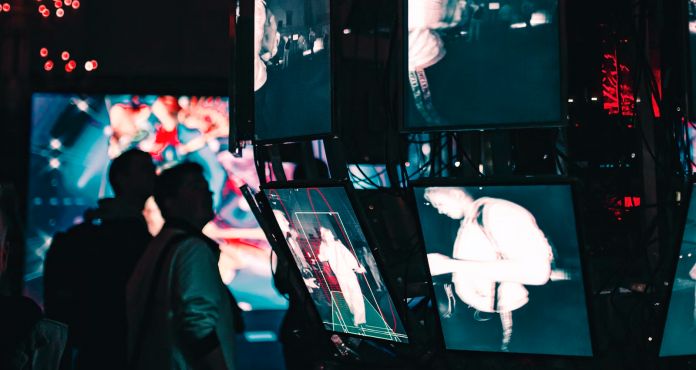Outdoor advertising has come a long way in the past decade. With its growth, we’ve had the pleasure of seeing many exciting and impactful digital signage trends emerge. Some trends only remained at the trend stage before their light faded. But others embedded themselves as permanent additions to the industry. As we move forward, they continue to expand continuously and they’re worth adopting in your own efforts. Let’s take a look at some of the biggest!
Cloud based solutions
Firstly, we focus on trends related to content management. At this point, we can safely say that we’ve noticed a few impactful digital signage trends which have become the norm, and justifiably so.
Digital signage software is the first. Early on, digital signage software providers fought to make a strong case and point for why a business would need a content management solution. After all, digital signage is just a video file played on a display. Why should you pay any additional fees for such a simple use? Over the years, however, software amplified continuously with development for every possible business use case. A strong CMS has now become a must for any business looking to take digital signage seriously. This went hand-in-hand with technological leaps, such as players, displays, and smart devices becoming more versatile and accessible.
The options and providers available today are many, some tailored for smaller businesses, while others scale to cover businesses handling hundreds if not thousands of displays across multiple locations. Of course, OnSign TV proudly stands as one of these solutions, having been in the field for over a decade.
Content personalization
Tailoring content to a key audience is a very common concept these days. We see it in all advertising channels. Once it was a challenge, but today there are many tools for identifying your target audience. Digital signage took a page from the online marketing playbook and expanded on this approach. Content is now tailored for the target consumer based on their preferences and stage with a business. They may be a new visitor or a loyal consumer.
Tailoring and personalizing content to the individual target audience has very much become one of the impactful digital signage trends and it continues to grow. At this point, it is no longer a digital signage trend but a solid basis for any strong digital signage strategy. Its precision can vary. On one end, personalized content draws in a wider audience to visit a business. Then, it can be so precise that it estimates the mood of the viewer and presents content precisely when and how needed. One example being delivering entertainment in waiting areas or crowded queues.
Social media integration
While digital signage cannot take any credit for the success of social media, a powerful trend in the industry has been the union between the two. With software the connection becomes so easy to make, allowing businesses are take advantage of the consumers’ attention and tying it into other marketing strategies.
Social media is the biggest, but other marketing channels are frequently connected to digital signage, including newsletter signups, email marketing, customer loyalty programs, ecommerce, etc.
Shift from LCD to LED
Now, let’s take a look at hardware and technology related digital signage trends.
There are plenty of choices and debates when it comes to hardware selection, but there has been a strong divide between LED or LCD displays. Initially, both sides had their strengths and weaknesses in pricing, use cases, and durability. As the industry grew, commercial grade displays rose to the challenge and at this point the answer is clear. LED displays are vastly superior to LCD displays in terms of brightness and endurance needed for commercial grade displays which will run nearly 24/7.
However, while the choice is clear, the pricing factor still complicates things, keeping LCD displays in play. In some instances, businesses don’t plan on running displays non-stop or burdening them with complex tasks at maximum brightness in the storefront. They don’t need an expensive LED display when a cheaper LCD model does the job. Thus, there still are scenarios where LCD displays are preferable. For instance, you may not need the maximum resolution possible for a decorative video wall, or a 4K LED display for a feedback touchscreen.
This shift is still taking place, so be mindful of the state of LED displays, the developments, and the pricing as we move forward. At a certain point, it is very likely they will entirely replace LCD displays in the commercial context. In case you’re still on the fence, it’s important to stay on top of the development!
Video walls
Speaking of video walls, they have become a popularized digital signage trend over the years. Some video walls aim to be the most engaging and interactive multi-touch platforms you’ve ever seen. Meanwhile, others simply want to provide ambient décor. It helps that it’s not hard to make your own if you have individual displays, even if they’re not matching in size. Digital signage software allows you to connect multiple displays into a large surface area where content will be deployed, regardless of the shape produced.
It’s clear why video walls have truly successfully become a go-to tool of the industry. It produces a large visual which is not particularly difficult to deploy, evokes reactions, and has many use cases. Plus, it’s cheaper to build a video wall from multiple displays rather than invest in a colossal one to do the job. Because of this, it is unlikely there will be any other tool to replace them. Projectors may act as adequate replacements, but only in specific cases with the right light conditions.
Take a look at these inspiring examples of video wall uses. With digital signage software, it’s increasingly easy to set them up. Look into how you can take advantage of this feature in your own campaigns, whether it’s a 3×3 or even 1×1 layout and make use of it!
The branching of interactivity
Interactivity quickly inserted itself as a highly common feature in the digital signage space. At first it was an exciting feature to engage passersby, typically in gamified content, but these days interaction is quite commonplace. Self-checkouts have definitely accelerated its acceptance and consumers are more accepting of stepping forward and interacting with a display.
Today we see touchscreens used for various purposes including gamification, providing feedback, playing content on demand, allowing consumers to browse for information, and so on.
The pandemic acts as a perfect test to see just how important this particular technology is in everyday life. Despite the reasonable expectation that touch screens will become a thing of the past during and maybe even after the pandemic, they quickly rose to the occasion.
As such, touchscreens have acted as a catalyst which made the consumer more open minded about embracing interaction methods in general. This leads us to a greater acceptance of gesture-based interaction as well as mobile integration. For instance, controlling a display by scanning QR-codes or connecting online is a very simple task for today’s audience. And yet, despite these new methods emerging, touchscreens continue to stand as one of the most impactful digital signage trends ever. After all, it lets you touch what you want to access. You don’t get more straightforward than that!
Artificial Intelligence
While not a recent trend, AI has set off to a sharp rise this year in particular. With AI-based content generation, from text to video, the possibilities that await on the horizon are endless. AI could assist in generating content in real-time, presenting it precisely when the viewer needs it. An exciting topic, but this particular digital signage trend may still be premature to discuss at this point in time. There is no doubt AI will grow in the future. There is also no doubt digital signage content creators will take full advantage of it to enhance their campaigns by a significant factor. Some already are! It simply isn’t as widely adopted as it could be, nor is AI so vastly tailored for the precise context of digital signage.
We talked about the potential of AI in the past, so read more about it in detail. For the time being, we will merely note it as a steadily growing trend which will undoubtedly make a significant impact on the industry with enough time. Keep your eye on it, and be ready to act!
Very exciting to see the digital signage trends which have cemented themselves permanently into the digital signage world, as well as those steadily growing. We will keep watching trends on the rise which are yet to make a big splash. With AI, for instance, it’s certain that this splash will happen. Meanwhile, the future of some trends remains to be seen.
Cover image by Maxim Hopman.







